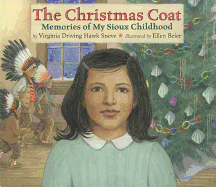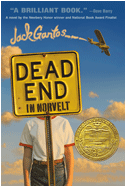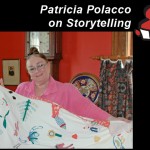Resources upon request: Tim Green
Customers in New York recently asked us to create original multimedia resources with author Tim Green. In these original Meet-the-Author Book Readings you’ll hear Tim explaining his personal inspiration for writing some of his books and reading a short excerpt…

 First: If anyone tells you that writing is easy, you have my permission to remind him or her that if writing were that easy, everyone would be doing it. What I do (almost) every day is play with words. I love it, couldn’t live without it. But the “playing” part is a bit of a misnomer. Wordplay demands a comfortable chair, lots of coffee, and seven carts of patience pulled by tireless oxen.
First: If anyone tells you that writing is easy, you have my permission to remind him or her that if writing were that easy, everyone would be doing it. What I do (almost) every day is play with words. I love it, couldn’t live without it. But the “playing” part is a bit of a misnomer. Wordplay demands a comfortable chair, lots of coffee, and seven carts of patience pulled by tireless oxen. Students of all ages benefit from quality books that authentically portray a variety of cultures. Librarians and teachers are aided in their efforts to diversify their collections through the work of the American Library Association's affiliates and roundtables that recognize distinguished titles for children and teens.
Students of all ages benefit from quality books that authentically portray a variety of cultures. Librarians and teachers are aided in their efforts to diversify their collections through the work of the American Library Association's affiliates and roundtables that recognize distinguished titles for children and teens.
 I’ve worn glasses since childhood. I really wanted them. I considered them an accessory rather than an albatross. I remember holding the huge black letter “E” in the wrong direction in the optometrist’s office, even though I could see the vision chart clearly. The doctor must have seen right through this ploy because my first pair of glasses did little to change my nearly perfect vision. Still, for the first week or so, I wore them religiously, glad to come into my third grade classroom appearing a little different than I had just days before.
I’ve worn glasses since childhood. I really wanted them. I considered them an accessory rather than an albatross. I remember holding the huge black letter “E” in the wrong direction in the optometrist’s office, even though I could see the vision chart clearly. The doctor must have seen right through this ploy because my first pair of glasses did little to change my nearly perfect vision. Still, for the first week or so, I wore them religiously, glad to come into my third grade classroom appearing a little different than I had just days before. The American Library Association's Youth Media Awards, announced each January, are a high point on the book community's calendar. For this month's post, TeachingBooks.net contacted and recorded conversations with the award winners, asking them to share their inspirations and influences.
The American Library Association's Youth Media Awards, announced each January, are a high point on the book community's calendar. For this month's post, TeachingBooks.net contacted and recorded conversations with the award winners, asking them to share their inspirations and influences.
 During 15-plus years of researching nonfiction for young readers I’ve learned that every project includes at least one pinch-me-is-this-really-happening moment. Such was the case as I researched the Memphis sanitation workers’ strike of 1968 for Marching to the Mountaintop: How Poverty, Labor Fights, and Civil Rights Set the Stage for Martin Luther King, Jr’s Final Hours (National Geographic, 2012).
During 15-plus years of researching nonfiction for young readers I’ve learned that every project includes at least one pinch-me-is-this-really-happening moment. Such was the case as I researched the Memphis sanitation workers’ strike of 1968 for Marching to the Mountaintop: How Poverty, Labor Fights, and Civil Rights Set the Stage for Martin Luther King, Jr’s Final Hours (National Geographic, 2012). With No Name-Calling Week occurring January 23-27, 2012, this is a perfect time of year to integrate multimedia resources into your anti-bullying curriculum.
With No Name-Calling Week occurring January 23-27, 2012, this is a perfect time of year to integrate multimedia resources into your anti-bullying curriculum.
 Kids are forever asking me where I get my ideas. Usually I say, “I steal them.” This is true but incomplete, and today—right here, right now—I’m going to give the genuine answer. The eighth book in the “Ivy and Bean” series, Ivy and Bean: No News Is Good News (Chronicle Books, 2011), is about money and cheese. And wax. And journalism. Also, ethical business practices, the right to privacy, value, the economics of scarcity, and did I mention cheese? How do all these things end up in a book together? Where did they come from and how did I turn them into an “Ivy and Bean” story? Let me tell you ...
Kids are forever asking me where I get my ideas. Usually I say, “I steal them.” This is true but incomplete, and today—right here, right now—I’m going to give the genuine answer. The eighth book in the “Ivy and Bean” series, Ivy and Bean: No News Is Good News (Chronicle Books, 2011), is about money and cheese. And wax. And journalism. Also, ethical business practices, the right to privacy, value, the economics of scarcity, and did I mention cheese? How do all these things end up in a book together? Where did they come from and how did I turn them into an “Ivy and Bean” story? Let me tell you ... The American Association of School Librarians (AASL) standards guide the lessons we create to help our students become successful 21st-century learners. These criteria—reaffirmed this fall at the biennial AASL conference in Minneapolis—underscore the vital role that school librarians play in assisting students as they acquire, apply, and share information in the digital age.
The American Association of School Librarians (AASL) standards guide the lessons we create to help our students become successful 21st-century learners. These criteria—reaffirmed this fall at the biennial AASL conference in Minneapolis—underscore the vital role that school librarians play in assisting students as they acquire, apply, and share information in the digital age. I’ve been writing and illustrating children's books for over a decade now. Wow, how time flies! But people are often surprised to hear that I came to this profession unexpectedly. Just like Scaredy Squirrel (Kids Can, 2006), who jumps out of his nut tree into the unknown, I leapt into the world of children’s books. It all started with an art project and a teacher who sent my Leon the Chameleon (Kids Can, 2001) mock-up to a publisher.
I’ve been writing and illustrating children's books for over a decade now. Wow, how time flies! But people are often surprised to hear that I came to this profession unexpectedly. Just like Scaredy Squirrel (Kids Can, 2006), who jumps out of his nut tree into the unknown, I leapt into the world of children’s books. It all started with an art project and a teacher who sent my Leon the Chameleon (Kids Can, 2001) mock-up to a publisher. In an effort to build awareness about the remarkable books written for children and teens across the globe,every two years the International Board on Books for Young People (IBBY) selects one author and one illustrator as the winners of the Hans Christian Andersen Award. This recognition is considered by many to be the world’s most prestigious in children’s publishing. Maurice Sendak, for example, is the only illustrator from the United States to ever win this award.
In an effort to build awareness about the remarkable books written for children and teens across the globe,every two years the International Board on Books for Young People (IBBY) selects one author and one illustrator as the winners of the Hans Christian Andersen Award. This recognition is considered by many to be the world’s most prestigious in children’s publishing. Maurice Sendak, for example, is the only illustrator from the United States to ever win this award.
 An interactive whiteboard is a fabulous classroom tool that brings multimedia to the forefront of literacy and library lessons. By shifting the instructional focus from a teacher presentation to classroom-wide engagement, a whiteboard encourages participation and discussion while supporting kinesthetic learners.
An interactive whiteboard is a fabulous classroom tool that brings multimedia to the forefront of literacy and library lessons. By shifting the instructional focus from a teacher presentation to classroom-wide engagement, a whiteboard encourages participation and discussion while supporting kinesthetic learners.